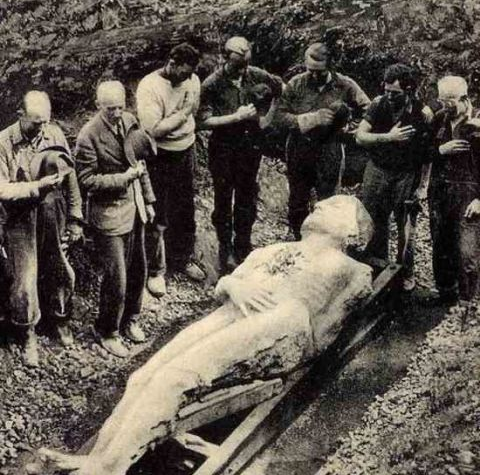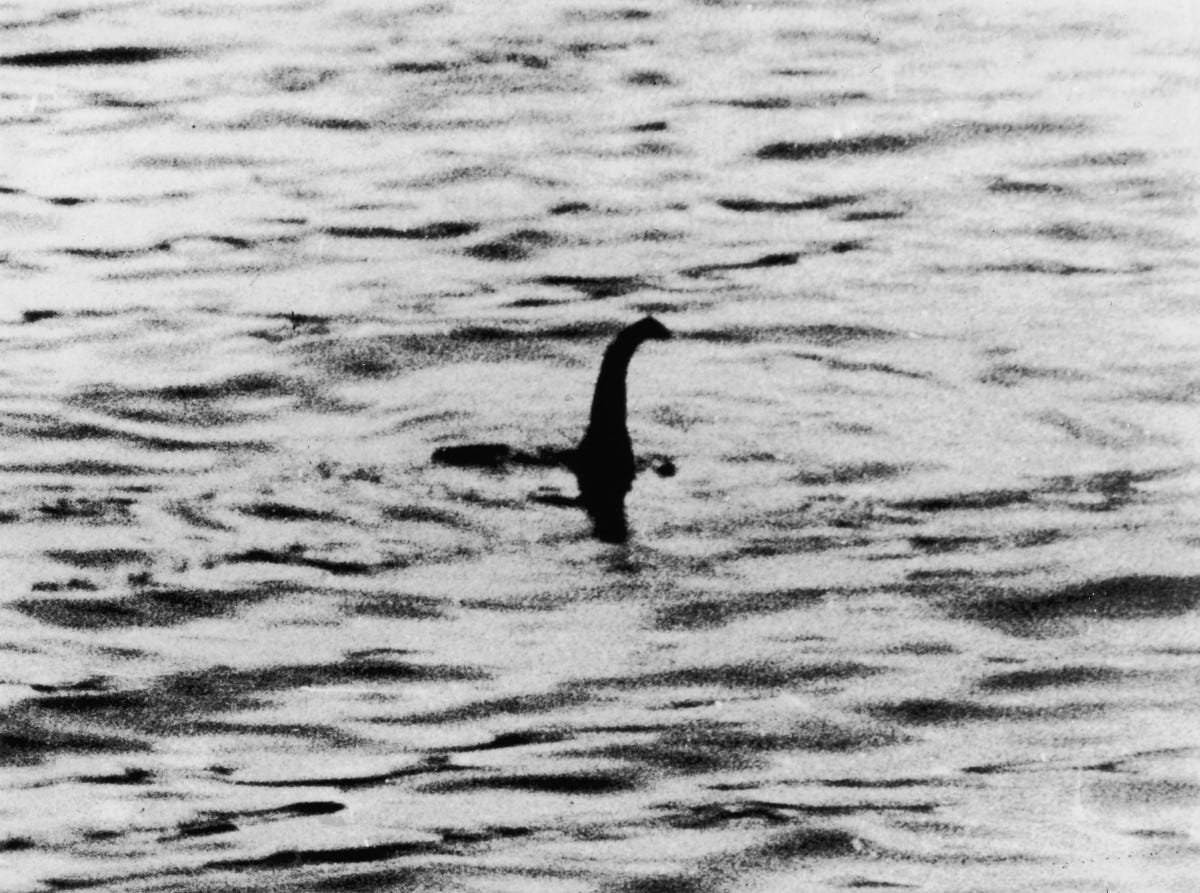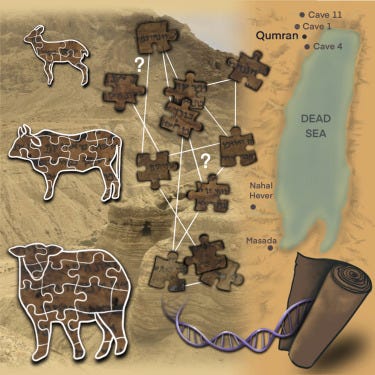Conspiracy-proof archeology
This is a cross-post from Telescopic Turnip.

There is a lot you can learn about history by asking random Frenchmen about World War Two. Which army contributed the most to the pwnage of Germany? According to Ifop who conducted the survey in 2014, it’s the United States (49%), followed by the USSR (23%), and Britain (18%). Now I don’t expect these numbers to enlighten your understanding of the Past; the detail that makes them interesting is that Ifop had asked the exact same question three times already: in 2004, in 1994 and in 1945, back when people remembered the war not from textbooks but from echoic memory. Here are the results:
Ask the same question about history several times, and it becomes meta-history. This survey caught live footage of collective memory being overwritten by the victors. Presumably, this happened in a somewhat liberal democracy with a somewhat free press, maybe with a little help from entertainment. It didn’t require a totalitarian power deliberately distorting history to manipulate the masses. But the masses were still manipulated somehow.
Of course, for most of history before the quantum revolution, Europe was ruled by totalitarian powers deliberately distorting history to manipulate the masses. If French people’s beliefs about the Red Army could drift so easily in the late 20th century, then it’s hard to trust anything coming from the official records of divine-right monarchs. You can find historical documents and artifacts and get an idea of what most likely happened, but if you allow for the possibility that the power structures of the time could fabricate documents and plant artifacts as much as they wanted, you will never be truly convinced.
Zero-day breaches in the laws of the Universe
In the world of computer hacking, there is a kind of security breach called a zero-day. Zero-days happen when an attacker discovers a breach that the developers themselves are not aware of – it has been known for zero days. So there is nothing they can do to prevent an attack. The 2010 Stuxnet attack on the Iranian nuclear program relied on no less than four different zero-days in Microsoft Windows – not something your typical basement h4xx0r can do. In essence, finding a zero-day boils down to understanding how some part of the computer system works, finding a specific thing that does not work the way everyone else thinks it does, and use it to accomplish something previously thought impossible.
This is not so different from what happens when a scientist discovers a new phenomenon in nature. Everybody thinks the Universe works in a certain way, then someone does an experiment which clearly deviates from the predictions, and our model of the Universe has to be patched.
Such scientific zero-days make it possible to perform experimental tests of history, in a way the most powerful conspiracies and divine-right monarchs could not anticipate[1]. The only assumption is that the conspiracies/monarchs didn’t have access to any futuristic technology or yet-unknown scientific knowledge.
Read-only windows to the past
To test history experimentally, we can exploit the delay between scientific discovery and engineering. First, people discover a phenomenon and come up with ways to measure and record it. Later, people devise new technologies to modify and engineer the phenomenon. Between the two, there is a period that I will call the read-only window:
During the ROW, historical evidence can be recorded, but not manipulated. For example, photography was invented in the early 1800s, and the first photomontages were produced in the mid-1850s. So the ROW for photography lasted for about 50 years, after what it became read/write, and of course the powerful used it for political manipulation throughout the following centuries.

Read-only windows are not “on/off”, they close gradually. Think of it as the product of the willingness of people to lie, and their capabilities to engineer a fake without getting caught. You can always imagine a secret society powerful enough to fabricate evidence regardless of the year, but the earlier you go back, the more implausibly powerful the secret society needs to be.
How many ROWs are still open today? Let’s review some candidates.
Video
Muybridge recorded the classic Horse in Motion in 1878, and twenty years later Méliès was already performing all kinds of wizardry on film. The potential for propaganda remained limited until digital video editing in the 1990s. However, the existence of conspiracy theories about the 1969 moon landing indicates that the ROW for video was already closing back then.
Voice recordings proved harder to fake: the ROW lasted from 1877 (with the first phonographs) to around 2016 (with voice cloning). As we can now make fake videos of fake faces with fake voices, the read-only windows associated with all these technologies are definitively closed.
Carbon-14
Carbon-14 has changed the official account of history quite a lot. Lately, it was used to show that Vikings were definitely present in North America as early as year 1021. Is this window still open? In my very naive understanding of radiocarbon dating, one could just sprinkle some carbon mix on various artifacts and plant them in places where they don’t belong. If so, this is certainly within the reach of the Secret Viking Misinformation Conspiracy we all believe doesn’t exist. If you are a 14C enthusiast, feel free to correct me and explain how actually it’s more complicated.
Genetics
The read-only window for genetics opened explosively in the 2000s, when sequencing human genomes went from impossible to “here is another batch of 100,000” in two decades. There are now papers reconstructing the migrations of all kinds of populations (Japanese, Americans, Inuits, Vikings, French, Middle-Easterners, Africans and of course, dogs), with some occasionally surprising findings (I was not surprised, because I had no idea what the prior historical theories were anyways).[2]
But, I can hear you object, none of these uncover any actual juicy conspiracy from the past. Here comes our next source: parchments. Parchments have genomes too, and there are ways to extract them for sequencing. That’s what Anava et. al did with the Dead Sea scrolls, an ensemble of parchments containing early drafts for the Bible. The whole article is a good read.

If everything goes the way I hope, this century will see the advent of high-throughput grimoire genomics, and we’ll be able to reconstruct the entire goat genealogy to see if it’s consistent with the story that is written on the parchments themselves. Perhaps we will discover some sophisticated medieval misinformation, or expose a deep conspiratorial rabbit hole involving the Order of Solomon’s Temple, corrupt monastic scribes and, obviously, the Vikings. Science can make this happen.
Is the ROW of genetics still open? Not so fast. Of course it’s impossible to fake the ancestry of entire populations, but it’s becoming easier and easier to synthesize forged DNA and insert it in individual artifacts. Consider the “lab leak” origin story of SARS-cov-2. One of the main arguments for it is that no direct ancestors of the human-infecting virus have been found so far in animals. Of course, evidence for a lab leak would be a political catastrophe, so the incentives are high for the CCP to avoid it at all costs. If someone finally found the missing link by sequencing samples from <any animal from this list>, would you believe it?
It’s certainly possible for a large government to covertly design and synthesize a fake missing-link virus to defuse potential lab leak suspicions. Synthesizing a 30 kbp viral genome would cost ~$10,000 from the Chinese company SBS, and recombinant viruses can be expressed and purified in a few weeks (here are detailed instructions[3]). Making sure the fake missing link can infect both bats and human cells requires more engineering, but nothing impossible. And of course, they would need to do everything clandestinely, with disastrous consequences if the public were to learn about it.
Ultimately, you have to fall back on your a priori trust in the Chinese government, and how competent you think they are at conspiring. I have no doubt genetics will teach us a lot of fascinating things about the past, and most of them will be true – but they will not be conspiracy-proof.
Edit: from the comments, Ben brought up this study about genetic testing revealing that, at some point in the Plantagenet dynasty, someone was not the legitimate heir to the crown. I also found this recent study of elephant genomics as a way to investigate into ivory trafficking.
Epigenetics
It sounds weird that you could use epigenetics to investigate conspiracies of the past, but it turns out there is something exactly like that. It checks all the boxes:
A classic historical conspiracy theory: holocaust denial
A newly-measurable phenomenon: epigenetic markers
A read-only window: you can’t fake epigenetics
The story goes that concentration camp survivors were treated so badly that the stress induced some long-lasting epigenetic modifications in their cells, and these were even transmitted to their children. Holocaust deniers commonly claim that all the official documents are fake, but it’s very implausible that the Elders of Zion or whatever could fake epigenetics.
Sadly, the actual epigenetic evidence is rather weak, the samples are tiny and I don’t think even the most open-minded, well-meaning, charitable holocaust deniers would accept it as proof. But, come on, this illustrates so perfectly what I mean by read-only windows, that I just had to include it. I still hope larger studies will confirm these findings before the window gets closed. But time is running out: epigenome editing is on its way.
Augury
Yes, there is a ROW for augury. This paper uses changes in migratory birds location to measure past changes in Earth’s climate, which I insist technically counts as augury. The major implication is that if we ridiculously fail at controlling global warming and future governments really want to erase all signs that it ever happened, they will have to move around truckloads of birds, just to be sure. You can never be too paranoid when you secretly rule the world.
All of these examples are about history as it was written by the powers of the past. Can we exploit a read-only window to learn about history as it is currently being written by the powers of the present? This will be the topic of the next episode, the fingerprints of ideology in science.
Thanks to Justis for the feedback.
- ^
Not to be confused with the people who recreate historical situations in the present to see what happens, which is also a thing.
- ^
Notice how the Viking paper claims that Vikings were actually black-haired, compared to modern Danes. These Vikings are starting to look a bit sus.
- ^
This is for lentiviruses, which are used all the time in biotech, so the protocols are very streamlined. Making a SARS-cov-2 relative would be more complicated.
Its interesting. A relatively recent example is people investigating some conspiracy involving English kings and royal succession using DNA evidence in the bones https://www.theguardian.com/uk-news/2015/mar/25/richard-iii-dna-tests-uncover-evidence-of-further-royal-scandal#:~:text=When%20scientists%20revealed%20last%20year,they%20vowed%20to%20investigate%20further.
One aspect that presents something of a problem is not just whether the window has closed on the evidence itself, but on the medium used to transmit the evidence. If someone on the street tells me all about their epigenetic studies then their level of evidence is epigenetic testing, but my level of evidence is “some guy on the street said...”. This is, I think, why photographs, videos and physical artefacts are so convincing. They are transmissible.
Very true. I was thinking from the point of view of the experimenter: “could I possibly test it if I really wanted to”. This may be relevant because knowing that something could be investigated in the future provides an incentive not to cheat.
Also the Plantagenet thing is really cool, I had no idea about it.
Re: Augury, I feel like there’s two ways for this to close though. One is, like you said, trucking the birds from their climate-change-induced altered ranges back to their historical ranges. But, it seems much easier to alter the records of the birds’ historical ranges, a la “the birds have always been migrating over Eastasia.”
So, generally, this ROW concept needs to take account that often this sort of evidence relies on comparing two unlike phenomena, e.g. physically observed bird migrations, with historical records of bird migrations. For the ROW concept to work in practice you need to take account of the ROW on both sides of the “equation.”
The key difference between epigenetics and normal genetics is that it’s easy to change epigenetic factors then change DNA.
Different epigenetic changes react to different environmental factors, but we don’t understand those well enough to have a good idea of what it takes for random epigenetic changes to happen. So it’s hard to rule out that someone knows what’s required for a given epigenetic change.
You need to be very careful with what you take the evidence to mean. If no one can fake photos, then a picture claiming to show the loch ness monster could still be a puppet or statue. A tiny object close to the camera. In a different lake altogether. Or at that photo quality, a photo of a painting. All you learn is that at some point their existed an object that looked like that.
For the genetic evidence, if you do genetic tests on a skull in a grave, that tells you about whoever is in the grave, but maybe not about whoevers name is carved on the gravestone. (Don’t even assume all the bones are from the same person if not all have been genetically tested.) A competent conspiracy trying to frame someone for murder could have taken a few hairs and placed them at the crime scene.
If you see a bunch of bones with spear-holes and other marks of battle, and broken bronze spearheads. Maybe this was a bronze age war. Or maybe those people died of a plague, and the bronze age conspiracy stabbed them and scattered broken spearheads around, to leave a scene looking like a war.
Yeah, in this case I think we can only use genetic testing for the timeframe where conspirators didn’t know genetic testing would ever be possible. You’re right that you don’t need DNA synthesis if you can plant hair from someone else.
Even if they are just trying to match colour and thickness, they could have still taken a hair from the person being framed.
Interesting read, but I don’t think the initial example and the following are very much connected. The shift of opinion about ww2 has presumably happened without fabricated evidence or misinformation about factual events. USSR and USA played a very different role in the defeat of Germany, so asking “which contributed the most” is sensitive to shifting narratives and highlighting of different events. Similar questions from more distant past: who was to blame for ww1? Was Napoleon spreading modernity and equality in Europe, or ruthlessly subjugating neighbors? Were the middle ages a dark age? Was the western Roman empire brought down by barbarians, or mainly by other factors? For all these you can have different answers without fabricated evidence, just by shifting some facts forward and neglecting others. That’s not to say that having tamper-proof historical sources is not important, just that it’s not sufficient. And personally I think most manipulation happens at the broader narrative level (in the past and in the present).
I meant the initial example as a justification for investigating the past in the first place, as a reminder that you don’t need to be a full-on conspiracy theorist to be suspicious of the historical record. When you say “shifting some facts forward”, I would also count that as the victors altering history. Had the US collapsed instead of the USSR, I suppose the facts that would be shifted forward wouldn’t be the same.
ROWs are a very cool concept & the examples are good!